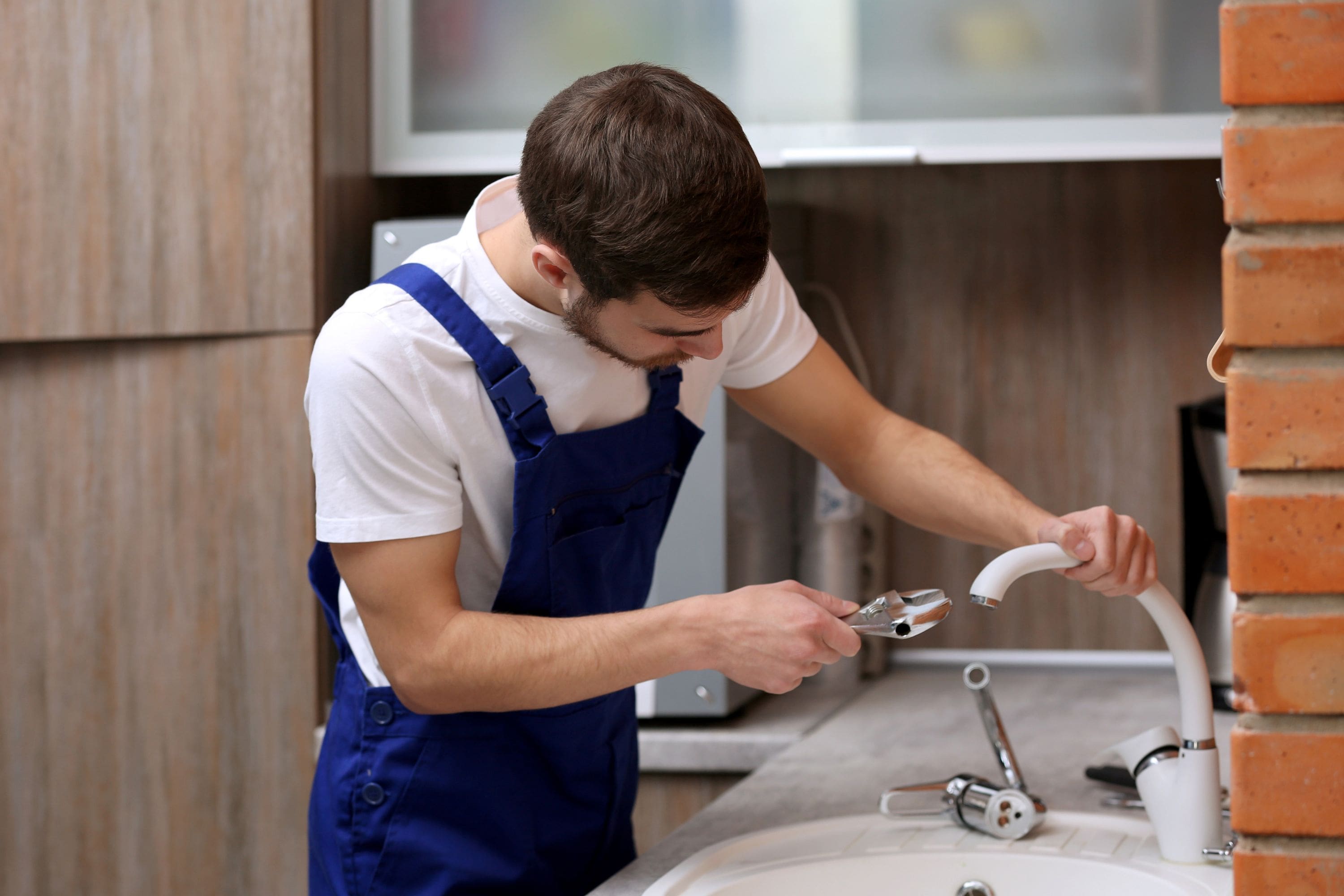Which It's Critical to Repair a Dripping Faucet
Which It's Critical to Repair a Dripping Faucet
Blog Article
Just about every person may have their unique thinking when it comes to How to Fix a Dripping or Leaky Faucet .

Dripping faucets might seem like a minor trouble, but their effect goes beyond simply the nuisance of the noise. From drainage to incurring unneeded monetary expenses and wellness threats, neglecting a leaking faucet can result in different repercussions. In this article, we'll look into why it's important to resolve this usual household issue quickly and successfully.
Wastefulness of Water
Ecological Effect
Trickling faucets contribute substantially to water waste. According to the Epa (EPA), a solitary faucet leaking at one drip per secondly can squander more than 3,000 gallons of water per year. This not just stress water sources however additionally influences ecological communities and wildlife dependent on them.
Step-by-Step Guide to Taking Care Of a Dripping Tap
Tools Needed
Before trying to repair a trickling tap, gather the necessary devices, including an adjustable wrench, screwdrivers, substitute parts (such as washing machines or cartridges), and plumber's tape.
Common Tap Issues and Their Solutions
Identify the type of faucet and the certain concern causing the drip. Usual problems include damaged washers, rusty shutoff seats, or damaged O-rings. Refer to manufacturer directions or on the internet tutorials for detailed guidance on fixings.
Financial Costs
Boosted Water Costs
Past the ecological effect, trickling faucets can inflate water bills significantly. The collected waste over time translates right into greater energy costs, which could have been prevented with timely fixings.
Possible Property Damage
Moreover, prolonged leaking can result in harm to fixtures and surface areas bordering the tap. Water accumulation can create staining, deterioration, and even structural issues if left neglected, leading to extra repair expenses.
Health and wellness Concerns
Mold And Mildew and Mildew Development
The consistent existence of moisture from a trickling faucet develops a suitable setting for mold and mildew development. These fungis not only compromise interior air quality however additionally posture health and wellness threats, particularly for individuals with breathing problems or allergies.
Waterborne Conditions
Stagnant water in leaking faucets can become a breeding ground for microorganisms and various other virus, raising the danger of waterborne illness. Impurities such as Legionella microorganisms thrive in stationary water, potentially causing major ailments when ingested or breathed in.
DIY vs. Expert Repair work
Pros and Cons of DIY Repair Service
While some might attempt to repair a leaking tap themselves, do it yourself repairs come with their own collection of obstacles. Without appropriate expertise and devices, DIY attempts can exacerbate the issue or bring about insufficient repair services, prolonging the issue.
Benefits of Working With a Professional Plumber
Employing an expert plumber ensures that the underlying cause of the leaking faucet is dealt with effectively. Plumbings possess the proficiency and devices to identify and repair faucet problems efficiently, conserving time and minimizing the danger of more damage.
Environmental Obligation
Specific Contribution to Preservation
Taking obligation for taking care of leaking faucets lines up with more comprehensive efforts towards water preservation and ecological sustainability. Every person's actions jointly make a significant influence on preserving precious sources.
Lasting Living Practices
By prioritizing punctual fixings and adopting water-saving behaviors, people contribute to lasting living practices that benefit both present and future generations.
Preventive Measures
Normal Upkeep Tips
To prevent dripping faucets, do regular upkeep such as cleaning up aerators, examining for leaks, and replacing damaged parts promptly. Additionally, take into consideration setting up water-saving tools or updating to much more reliable fixtures.
Value of Prompt Fixes
Resolving trickling taps as soon as they're noticed prevents additional water waste and potential damages, inevitably conserving both water and money in the long run.
Influence On Property Worth
Perception of Well-Maintained Residential Or Commercial Property
Preserving a building in good condition, consisting of attending to upkeep concerns like trickling faucets, boosts its perceived value and charm amongst prospective customers or renters.
Impact on Resale Worth
Qualities with well-kept plumbing fixtures, consisting of taps, command greater resale values in the realty market. Addressing trickling faucets can contribute to a favorable impact during building assessments and settlements.
Final thought
Resolving a dripping tap exceeds mere comfort; it's an essential action towards conserving water, reducing monetary expenses, and safeguarding wellness and residential property. Whether with DIY repairs or expert help, doing something about it to take care of dripping taps is a little yet impactful way to promote accountable stewardship of resources and add to a much healthier, more lasting future.
How to Fix a Leaky Faucet: Step-by-Step Repair Guide
A leaky faucet may seem like a simple annoyance, but if it's not fixed promptly, that leak could cost hundreds to potentially thousands. From water damage to mold, mildew, and high water bills, even a tiny leak can be catastrophic if left unattended. Damage like this can even affect the overall value of your home, so it's important to take the right approach for leaky faucet repair. You may need the help of a plumber in some cases, but we've got a few tips you can try on how to fix a leaky faucet before calling the pros.
Four Faucet Types
When you're learning how to fix a leaky faucet, the first step is knowing what kind of faucet you're working with! There are four common types.
Cartridge Faucets
Cartridge faucets come in one- or two-handled varieties. In one-handled cartridge faucets, hot and cold water combines in a single cartridge. In the two-handled versions, hot and cold water are controlled separately and mixed in the faucet.
Ball Faucets
Ball faucets have a single lever you push up and down to adjust the pressure and rotate to change the temperature. A slotted metal ball controls the amount of water allowed into the spout.
Compression Washer Faucets
They're the oldest type of faucet, but they're still used in many homes — especially older ones. Compression faucets have two separate handles that, when turned, raise or lower the washer that seals a water valve. This valve stops water from flowing through the faucet when it is turned off.
Disc Faucets
Disc faucets rarely need to be repaired due to their maintenance-free design. The water flow is controlled by two discs — the upper one raises and lowers against a fixed lower disc, creating a watertight seal. If your disc faucet starts leaking, you may need to replace the seals or clean residue buildup from the inlets.
Fixing a Leaky Faucet
Step 1: Turn Off the Water
Whether you're learning how to fix a leaky bathtub faucet or how to fix a leaky kitchen faucet, always turn off the water supply to your working area when you're fixing a leak. The last thing you want is a flood added to your list of things to fix.
Look for the shutoff valves below your sink or around the tub and turn them clockwise to stop the water flow. If your faucet doesn't have shutoff valves, you may need to turn off the water for the whole house. Check to make sure it's off by turning the faucet on. If nothing comes out, you're ready to start the repair.
Step 2: Take Apart the Faucet
How you disassemble your faucet depends on the type of fixture you have. You can use a flathead screwdriver to remove the caps on top of the handle or handles for cartridge and compression faucets. Inside, you should see handle screws. Unscrew these with a screwdriver to remove the handle.
Disc- and ball-style faucets will typically have an inlet screw near the handle, and removing that will reveal the interior of the faucet.
Detach the Valve Stem
For cartridge- and compression-style faucets, you'll see the inner valve stem or cartridge once you remove the faucet handles. If you have a compression faucet, unscrew the brass valve stem. If you have a cartridge faucet, pull out the cartridge. If your cartridge has been in place for a while, it may require some tools or extra force to remove it due to mineral deposits.
Examine and Replace Parts
Once you've removed the parts, check them out to confirm what needs to be replaced. You may see corroded rubber washers, O-rings, stems, or cartridges. On a ball-style faucet, check the seats and springs for damage.
If you need to repair a leaky disc faucet, check the inlet and seals on the lower disc.
Once you determine what parts must be replaced, visit your local hardware store. Bring the damaged parts with you to ensure you can purchase the correct components to replace them.
Clean Valves and Faucet Cavity
If you've removed a stem or cartridge, you may notice mineral buildup in the faucet's threads. Use white vinegar to clean the valve seat by soaking it for a few minutes, then scrub it away with a soft toothbrush and rinse with warm water. You can also clean the interior of the faucet in the same way.
Reassemble the Faucet
Once your faucet is cleaned and the required parts have been replaced, it's time to reassemble it. Put the pieces back together and slowly turn the water supply back on. Doing this slowly is crucial because too much initial water pressure can damage the new hardware you've just installed.
https://homewarranty.firstam.com/blog/how-to-fix-leaky-faucet

We had been brought to that write-up on Why Are My Faucets Dripping (And Can I Fix It Myself)? from a good friend on our other site. Liked our blog? Please quickly share it. Help another person locate it. Thanks for being here. Return soon.
Report this page